The Delaware Canal (18 page)
Read The Delaware Canal Online
Authors: Marie Murphy Duess

Underground railroad researcher Millard Mitchell stands in front of the historic library in Yardley.
Author's collection
.
The main line of the escape path through Pennsylvania was primarily by way of York, Adams, Lancaster and Chester Counties. Bucks County was the “Fourth Road” in the escape route of fugitive slaves from the South, and it ran from 1840 to 1850. The Bucks County route was less used, yet many slaves came through the county and went on to reach Canada.
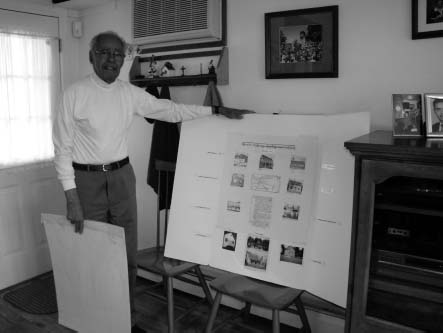
During speaking engagements and when talking to students, Millard Mitchell uses photographs, maps and newspaper articles to tell the story of the fleeing slaves who made their way through Bucks County during the years of the underground railroad.
Author's collection
.
The fugitives traveled in constant fear all night long and rested in hiding places during the day. They believed that discovery was just around the next bend, at the next barn or in the next cellar. The route in Bucks zigzagged to elude pursuit, but most accounts recall that it started in Bristol, moved through Morrisville, Yardley, Langhorne, Newtown, Wrightstown, Buckingham, New Hope and almost always ended in Quakertown at the home of Richard Moore, the last stop of the underground railroad in Bucks County. There are accounts of numerous tunnels throughout the county that connect one station to another.
Stories, given to us from recollections by reliable sources in Bucks County, also point out places along the river and canal that were stations, and it makes sense that the Delaware Canal was a route on the underground railroad, just as the Delaware and Hudson, Erie, Morris and Ohio Canals all claim to have been.
Millard C. Mitchell, the foremost authority on the underground railroad in Bucks County (particularly in Yardley), reports “I've seen very little in writing due to the fact that the underground railroad was secretâeverything was secretly done for protection from prosecution from the Fugitive Slave Law.” Yet, Mr. Mitchell has met and interviewed several residents of Yardley and other towns along the canal who have verified stories handed down from generations of canallers. When Mitchell, who is originally from North Carolina and is the grandson of a fugitive slave, first moved to Yardley in 1956, he found that several of his neighbors and new friends were the grandsons of operators in the underground railroad. He also visited the subterranean rooms in several of the buildings and homes in Yardley that hid men, women and children on their flight to freedom. Upon receiving information from what he discerned to be “very reliable sources,” he visited cemeteries and looked at records to authenticate that those people who were assumed to be participants in the underground railroad were alive during the years before the Civil War and worked in occupations that would attest to their availability to help. According to Mitchell:
There was an African American minister of the AME Methodist Church in Yardley, a Rev. Miller, who was instrumental in securing places in Yardley to hide the fugitive slaves. There were about ten stations in Yardley
.
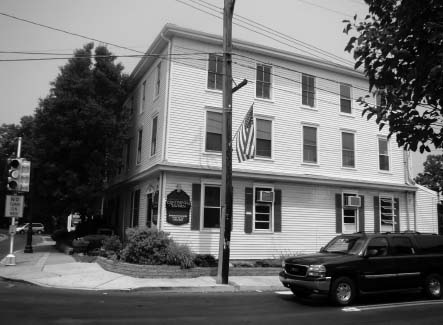
The Continental Tavern was one of the “stations” on the underground railroad. Tunnels from the canal connected several buildings and homes in Yardley where runaway slaves could hide.
Courtesy of the Continental Hotel
.
Four stations were very close to the canal: the town's general store, the Continental Tavern (which was a temperance house at the time), the gristmill and Lakeside, a private home facing Lake Afton that backs up to the canal.
The Continental Tavern has recently been renovated by new owner Frank Lyons, who was proud to share information about a stone-walled, dirt-floor chamber in the lowest level of the building that can be entered at this time through a trapdoor only. Other parts of the cellar of the building are readily accessible and show evidence of a shop and other common uses, but there is no way into this secret chamber from any other part of the building.
Additionally, there is a well-shaped hole in the hidden chamber that could have been used to allow the entry of fugitives from an underground tunnel that is reported to come directly from the canal bank. As layers of the dirt floor are excavated, Lyons and his workers are finding artifacts from each eraâthere is very strong evidence that the Continental was a speakeasy during Prohibition, as they found ten to fifteen thousand bottles, whole and broken in every size and shape, from that era. As they dig deeper into the floor of the chamber, they hope to find further evidence of the underground railroad. With Millard Mitchell's assistance, Lyons intends to rebuild the chamber and add the kind of furniture and utensils that would have been there before the Civil War for patrons to view.
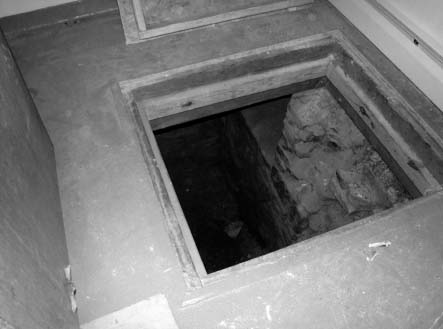
This trapdoor leads to a chamber in the lower level of the Continental Hotel. Although there is access to other parts of the basement in this building, the only entrance to this chamber is by the trapdoor in the kitchen of the tavern.
Courtesy of the Continental Hotel
.
Mitchell has seen similar subterranean chambers in other homes and buildings in Yardley that had been kept intact, a whisper that confirms the courage of people who wanted to do right and the determination of refugees who fled tyranny and slavery to seek freedom.
Fugitive slaves would travel up from the lower portion of Pennsylvania through Germantown, which was occupied mainly by German Quakers who were strong abolitionists, and in the cover of night they would go to the docks in Philadelphia where the coal boats had just been emptied of their cargoes. The boatmenâAfrican American, Quaker and even Irish and German sympathizersâwould usher their human cargo into the holds and close the hatches, undoubtedly with provisions of food and water.
From Philadelphia, the boats would be pulled by steamboat back to the Bristol basin and into the Delaware Division Canal, where the boatmen would begin the return trip to Mauch Chunk. According to Mitchell, there was a lookout point on River Road just south of Yardley, where a sympathizer watched from the top of his house to see if the militia from the barracks in Trenton was on the way across the bridge in search of lawbreakers. If he saw activity, he'd send an alarm out to the boats and other stationmasters and conductors.
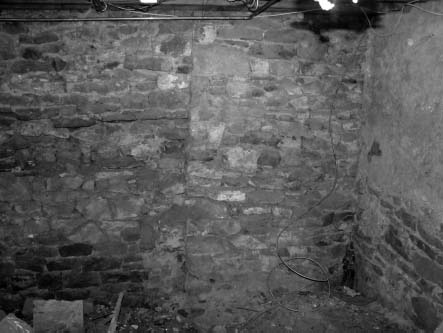
This is a chamber that is believed to have been a hiding place of runaway slaves.
Courtesy of the Continental Hotel
.
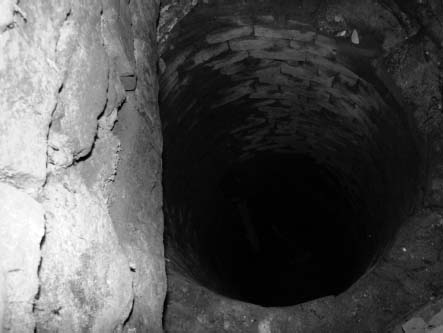
Frank Lyons, owner of the Continental Tavern, is excavating the secret chamber and cistern that is located in the basement of the restaurant to find the tunnel that is alleged to connect to the canal.
Courtesy of the Continental Hotel
.
It was a one-day trip from Bristol to Yardley, where the boats would tie up, the mules would be stabled and the fugitives would be guided to a hideout in one of the stations closest to the canal. They would be fed and have a chance to rest. Depending upon the “climate” in the region, the fugitives would either return to the boat before dawn to continue their escape to the north, or they would be hidden in a wagon and taken in another direction, probably through Attleborough (now Langhorne), just a few short miles from Yardley, which also was a safe haven for fugitive slaves. Sometimes the slaves would stay in Yardley for a few weeks, working in the gristmill or on local Quaker farms to earn some money before they moved on to the next station.
Sadly, many of the conductors and stationmasters never found out what happened to the hopeful people they helped. Few letters were sent since the majority of slaves hadn't been educated and didn't know how to write, and even if a newspaper article was published along the route relating the capture of a fugitive slave, it normally didn't make it to other municipalities. The “operatives” didn't know if those they helped were captured or living free in Canada. They had only their own consciences to tell them that the guarded work they had done was righteous and compassionate.
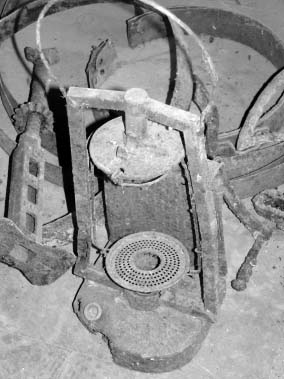
During excavation of the chamber, this canalboat “night hawker” was found in the rubbish.
Courtesy of the Continental Hotel
.

